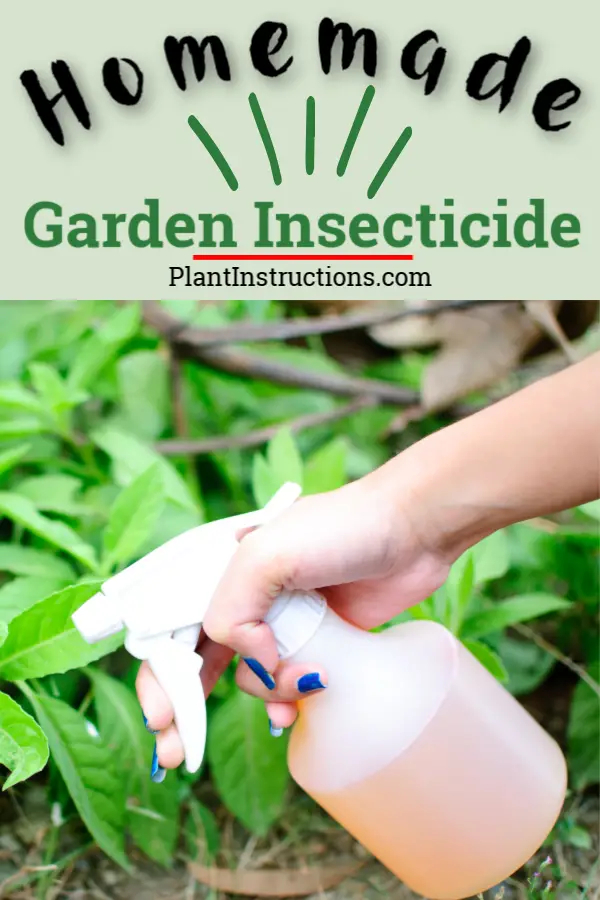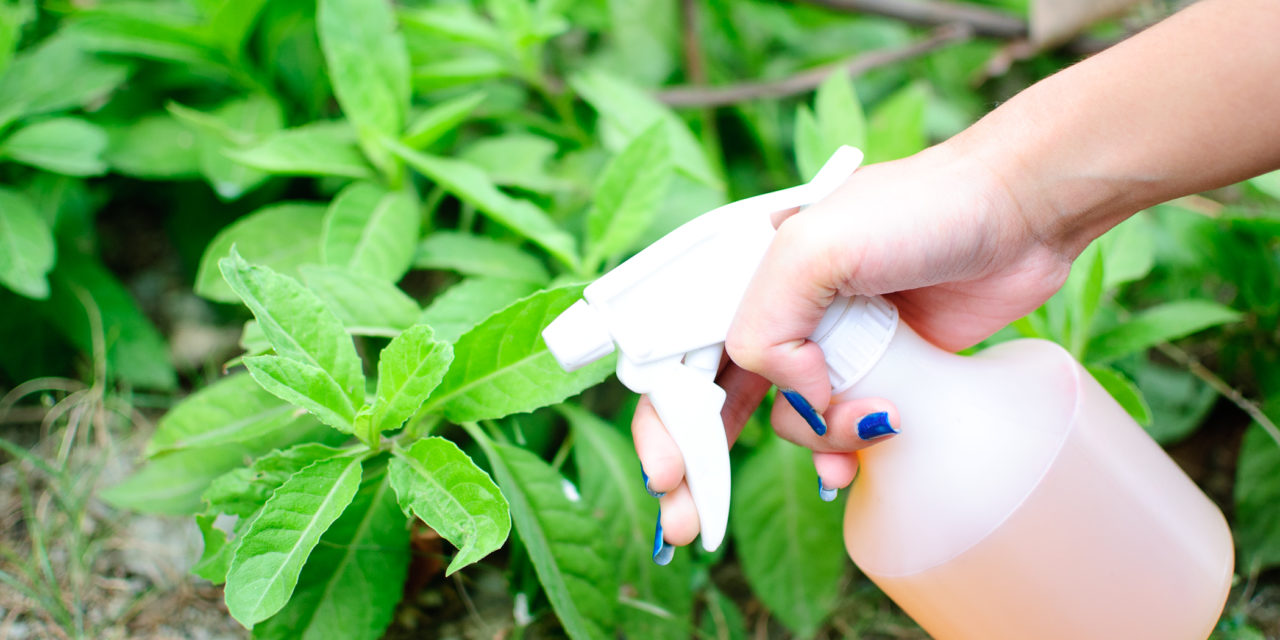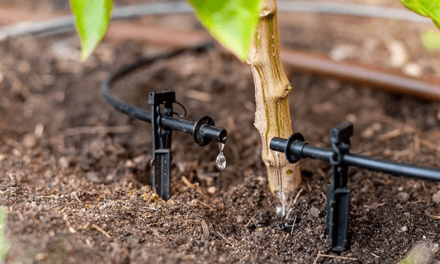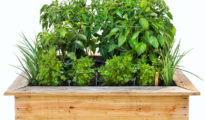This all natural DIY garden insecticide is powerful enough to keep bugs, critters, and weeds at bay, all while being completely safe for your pets and family!
There is nothing more rewarding than growing your own fruits and vegetables, but that doesn't come without a few headaches! The biggest one being insects and pests which can wreak havoc on a garden. This DIY garden insecticide uses gentle and natural ingredients that will actually stop insects in their tracks!
Today we're going to share two different types of garden insecticides:
#1. An oil based insecticide.
#2. A soap based insecticide
DIY Garden Insecticide Recipes
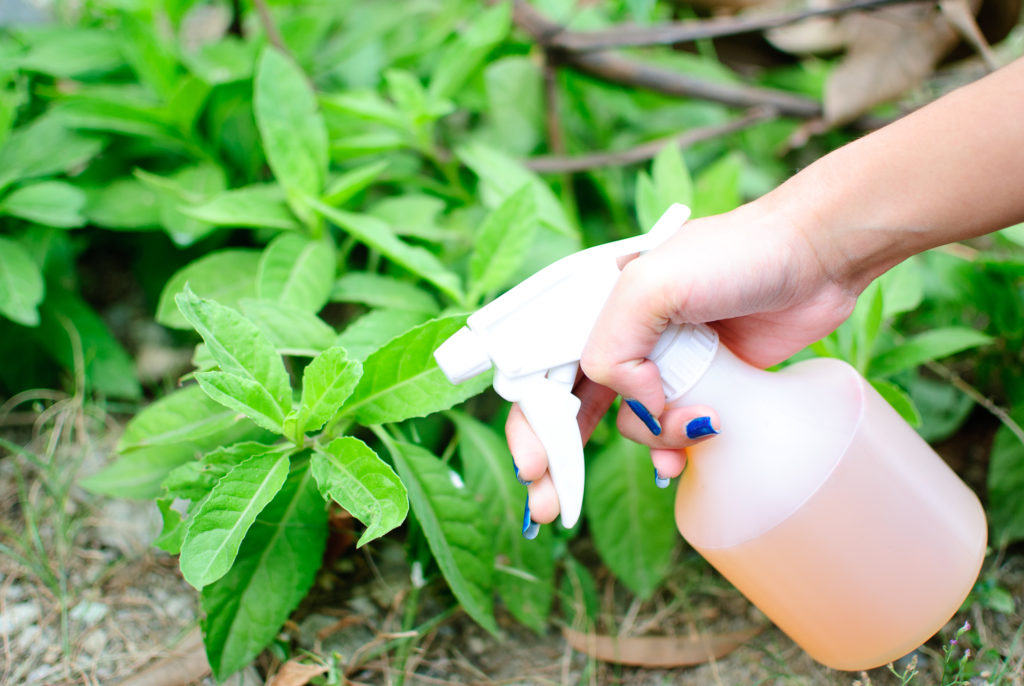
#1. Oil Based Insecticide
This insecticide recipe uses vegetable oil mixed with a mild soap to kill and prevent insects such as aphids, mites, thrips, and many more.
You'll Need:
- 1 cup vegetable oil
- 1 tbsp soap (such as Dr. Bronner's castile soap)
- Water
Directions:
- To a bottle, add the vegetable oil and soap and mix really well until thoroughly combined.
- When you're ready to use the mixture, simply add 2 teaspoons of the oil mixture to 1 quart of water and mix well.
- Spray directly onto the insects.
Why This Works:
The oil in the insecticide coats the bodies of the insects and therefore suffocating them. This basically blocks the pores on their bodies through which they breathe. It may sound cruel, but it really does work!
You can also spray this around your garden which will prevent insects and other critters from entering the area.
#2. Soap Based Insecticide
This insecticide is very similar to the oil based one, but uses more soap rather than oil to kill off aphids, mites, beetles, whiteflies, and a slew of other little pests.
You'll Need:
- 1 1/2 tsp mild liquid soap (such as Dr. Bronners castile soap)
- 1 quart water
Directions:
- To a spray bottle, add the soap and water and shake well.
- Spray directly onto insects and/or affected areas of the plants.
- Apply as needed and only do so in the mornings or evenings (never in the middle of the day while the sun is out as it can damage your plants!).
Like this post? Share and Pin 🙂
